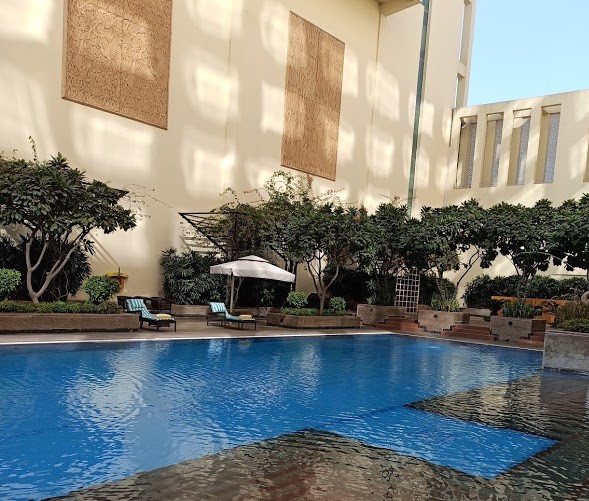NEWS
RBI opens Rs 15,000 cr liquidity window to hotels, tourism, salons
RBI opens separate liquidity window of Rs 15,000 cr to Covid-hit sectors; hotels, tourism and salons are included in list.
RBI opens separate liquidity window of Rs 15,000 cr to Covid-hit sectors; hotels, tourism and salons are included in list.

The Reserve Bank of India (RBI) has opened a separate liquidity window of Rs 15,000 crore to provide support to select sectors such as restaurants, travel agencies, beauty parlours and salons that are hit hard by the coronavirus pandemic. This will have tenors of up to three years at the repo rate till 31 March 2022.
Banks are allowed to park their surplus liquidity, equivalent to such loan books, under the reverse repo window, at 3.75% or 40 basis points above the reverse repo rate.
The fresh lending support under this scheme will be to hotels and restaurants; tourism sector comprising travel agents, tour operators, adventure and heritage facilities, aviation ancillary services such as ground handling and supply chain, and others such as private bus operators, car repair services, rent-a-car service providers, event organizers, spa clinics and beauty parlours and salons.
“In order to mitigate the adverse impact of the second wave of the pandemic on certain contact-intensive sectors, a separate liquidity window of Rs 15,000 crore is being opened till 31 March 2022 with tenors of up to three years at the repo rate," said RBI Governor Shaktikanta Das.
A large set of borrowers will also be able to avail of the benefits under resolution Framework 2.0 as the maximum aggregate threshold has been lifted from Rs 25 crore to Rs 50 crore for MSMEs (micro, small and medium enterprises), small businesses and loans to individuals.
“As per our estimate, almost 35-45 lakh units (with outstanding of Rs 6-7 lakh crore) are already eligible for Resolution Framework 2.0 under the exposure limit of Rs 25 crore. The distribution indicates that almost 80% of such units are in less than Rs 10 lakh category. The increase in limit to Rs 50 crore will now additionally include at most 5,000 units, though their outstanding amount eligible for restructuring will be significant,” said State Bank of India group chief economic adviser Dr Soumya Kanti Ghosh.
Ghosh added: “Liquidity support and credit guarantees are being extended by the central bank and the government to affected businesses/ sectors, which might help tide over working capital needs but not address deeper risks of business viability or solvency.”
Ratings agency Crisil feared risk aversion among banks may lead to only the large companies benefitting under the Rs 15,000-crore on-tap liquidity window for contact-intensive sectors.
”There is a possibility that only large existing borrowers in contact-intensive sectors actually benefit from this on-tap liquidity window as banks may have greater comfort with them," the agency said.
In the current environment, it is possible that a number of banks could be risk-averse and the benefit of on-tap liquidity facility may not, therefore, reach the smaller and lower-rated companies in these sectors fully, it said.
Crisil rates 6,800 mid-size companies, excluding those engaged in the financial sector, and 4,700 of those are small and medium enterprises (SMEs), having bank loan exposure of up to Rs 50 crore and were standard accounts as of March 2021.
"The RBI's relaxation in overall bank exposure threshold is timely, as it now increases the coverage of stressed companies that typically have weaker credit profiles," Crisil chief rating officer Subodh Rai said.
The success of the programme will depend on how banks perceive the risk as compared to the higher reverse repo gains. Said HDFC Bank chief economist Abheek Barua, “A more equitable distribution of credit is likely to be contingent on whether the assessment of risks is in line with the markup over reverse repo provided by RBI to banks. Therefore, some form of credit guarantee is perhaps required for de-risking the system."
RBI on Friday also announced further support to MSMEs, particularly smaller MSMEs and other businesses through a special liquidity facility of Rs 16,000 crore to SIDBI for on-lending or refinancing.
So will credit offtake revive? “We firmly believe that even as RBI has taken many measures to reinvigorate credit offtake, it continues to be low because corporates have deleveraged by repaying high-cost loans through funds raised through bond issuances. Corporate willingness for new investments remains low among all-pervasive uncertainty. Only fiscal policy can rekindle animal spirits at this juncture – monetary policy has almost nil headroom,” said Ghosh.
Earlier, the Reserve Bank had announced an on-tap liquidity window of Rs 50,000 crore to support airlines and healthcare infrastructure.
